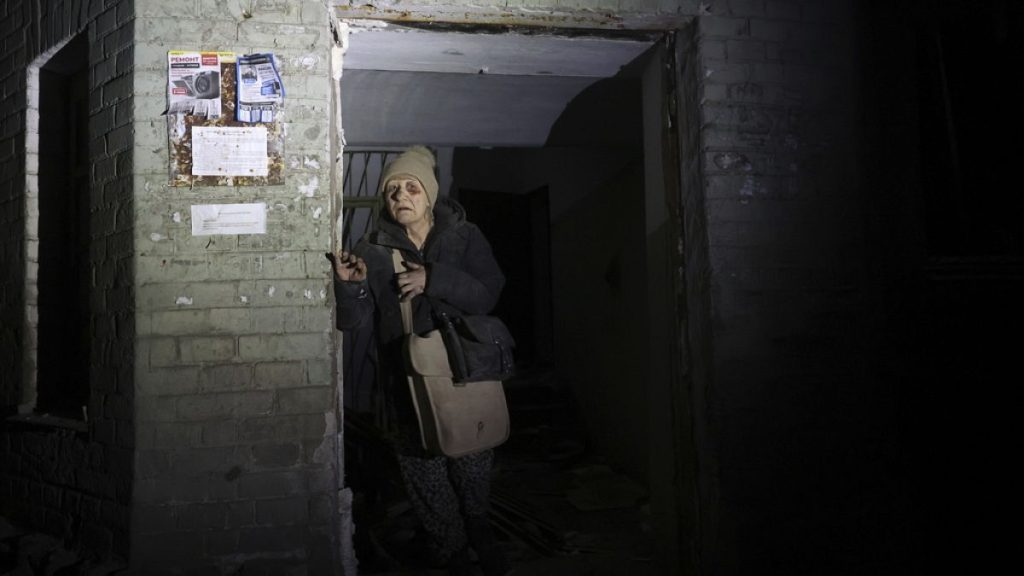The night of January 24-25, 2024, witnessed another wave of Russian aerial aggression against Ukraine, marked by a large-scale drone attack. Ukrainian air defenses demonstrated their increasing effectiveness, intercepting a significant portion of the incoming threat. However, the attacks still resulted in damage to civilian infrastructure, highlighting the ongoing threat to Ukrainian citizens and the enduring challenges posed by the conflict.
Russia launched at least 61 drones across various regions of Ukraine, targeting critical infrastructure and civilian areas. Ukrainian forces, bolstering their air defense capabilities with Western-supplied systems and refined tactics, successfully shot down 46 of these drones, along with two Russian missiles launched from aircraft. This represents a significant success rate for Ukrainian air defenses, showcasing their growing proficiency in countering these persistent threats. The targeted regions included Odesa, Kharkiv, Sumy, Donetsk, and Zaporizhzhia, indicating a wide-ranging assault aimed at disrupting various aspects of Ukrainian life and military operations.
Despite the successful interceptions, some drones managed to penetrate Ukrainian defenses, causing damage in the Kyiv region, specifically in the town of Vyshneve and a settlement within the Fastiv district. The most substantial damage occurred to a nine-story residential building in Vyshneve, where explosions caused significant structural damage, impacting balconies, window frames, and a staircase. While the building was partially occupied, emergency crews swiftly responded, rescuing five residents, including two children. Remarkably, no injuries or fatalities were reported, a testament to the rapid response of emergency services and the resilience of the residents.
The aftermath of the attack revealed the extent of the damage to the affected building, a newly constructed high-rise. Balconies from the fourth to the eighth floor were destroyed, window frames were shattered, and the ceiling of a staircase in one of the building’s entrances collapsed. A team of 42 rescuers, equipped with seven specialized vehicles, were deployed to the scene. They meticulously inspected the building’s entrances, dismantled unsafe structures, and ensured the safety of the remaining residents. Neighboring buildings also sustained damage, highlighting the indiscriminate nature of the drone attacks and the widespread impact on the community. The use of drones by rescue teams proved invaluable in assessing the damage and aiding in debris removal, showcasing the increasing reliance on technology in disaster response.
Amidst the destruction and disruption, the resilience of the Ukrainian people shone through. Volodymyr, a representative of the building’s residents, expressed relief that everyone survived the attack and maintained optimism about the future, expressing hope for a swift repair of the damaged structure. His statement, “I think we’ll restore everything within a month at most, once we have the expert’s opinion,” reflects the unwavering spirit of the Ukrainian people to rebuild and recover in the face of adversity. This determination to rebuild symbolizes the broader national resolve to resist the ongoing Russian aggression and maintain a sense of normalcy amid the conflict.
Concurrent with the drone attacks, the Russian Ministry of Defense claimed significant advances on the ground, asserting that their troops had entered the center of Velyka Novosilka, a strategically important town in the Donetsk region, and raised the Russian flag after a prolonged battle. This claim, if verified, would represent a tactical victory for Russia in a region that has seen intense fighting. Furthermore, Russian forces are reportedly closing in on Pokrovsk, a crucial supply hub strategically located at the intersection of multiple supply highways leading to key cities within the Donetsk region. The capture of Pokrovsk would severely disrupt Ukrainian logistics and further complicate their defense efforts in the region. The ongoing fighting in these areas underscores the continuing intensity of the conflict and the strategic importance of these locations for both sides. The combination of drone attacks on civilian infrastructure and ground offensives reflects a multi-pronged Russian strategy aimed at weakening Ukrainian resolve and achieving territorial gains.

